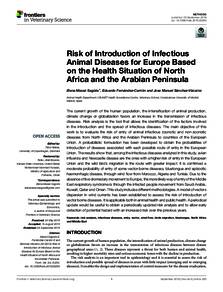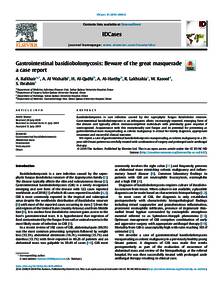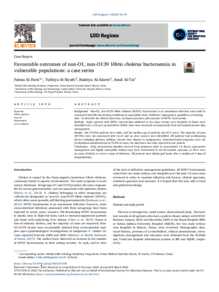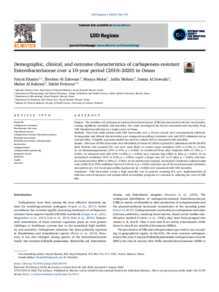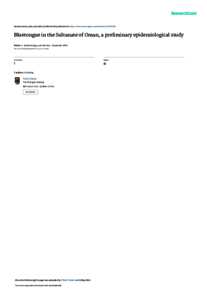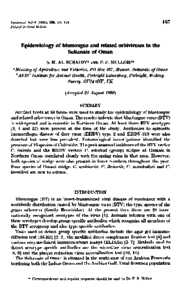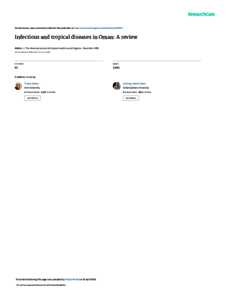Document
Risk of introduction of infectious animal diseases for Europe based on the health situation of North Africa and the Arabian Peninsula.
Identifier
DOI: 10.3389/fvets.2019.00293
Source
Frontiers in Veterinary Science. V. 6, 293
Contributors
Fernández-Carrión, Eduardo., Author
Sánchez-Vizcaíno, Jose Manuel., Author
Country
Switzerland
City
Lausanne
Language
English
Subject
English abstract
The current growth of the human population, the intensification of animal production, climate change or globalization favors an increase in the transmission of infectious diseases. Risk analysis is the tool that allows the identification of the factors involved in the introduction and the spread of infectious diseases. The main objective of this work is to evaluate the risk of entry of animal infectious zoonotic and non-zoonotic diseases from North Africa and the Arabian Peninsula to countries of the European Union. A probabilistic formulation has been developed to obtain the probabilities of introduction of diseases associated with each possible route of entry in the European Union. The results show that, among the infectious diseases analyzed in this study, avian influenza and Newcastle disease are the ones with a higher risk of entry in the European Union and the wild bird's migration is the route with greater impact. It is confirmed a moderate probability of entry of some vector-borne diseases, bluetongue and epizootic haemorrhagic disease, through wind flow from Morocco, Algeria and Tunisia. Due to the absence of live dromedary movement to Europe, the more likely way of entry of the Middle East respiratory syndrome is through the infected people movement from Saudi Arabia, Kuwait, Qatar and Oman. This study includes different methodologies. A model of vectors dispersion in wind currents has been established to assess the risk of introduction of vector borne diseases. It is applicable both in animal health and public health. A periodical update would be useful to obtain a periodically updated risk analysis and to allow early detection of potential hazard with an increased risk over the previous years.
ISSN
2297-1769
Resource URL
Category
Journal articles

